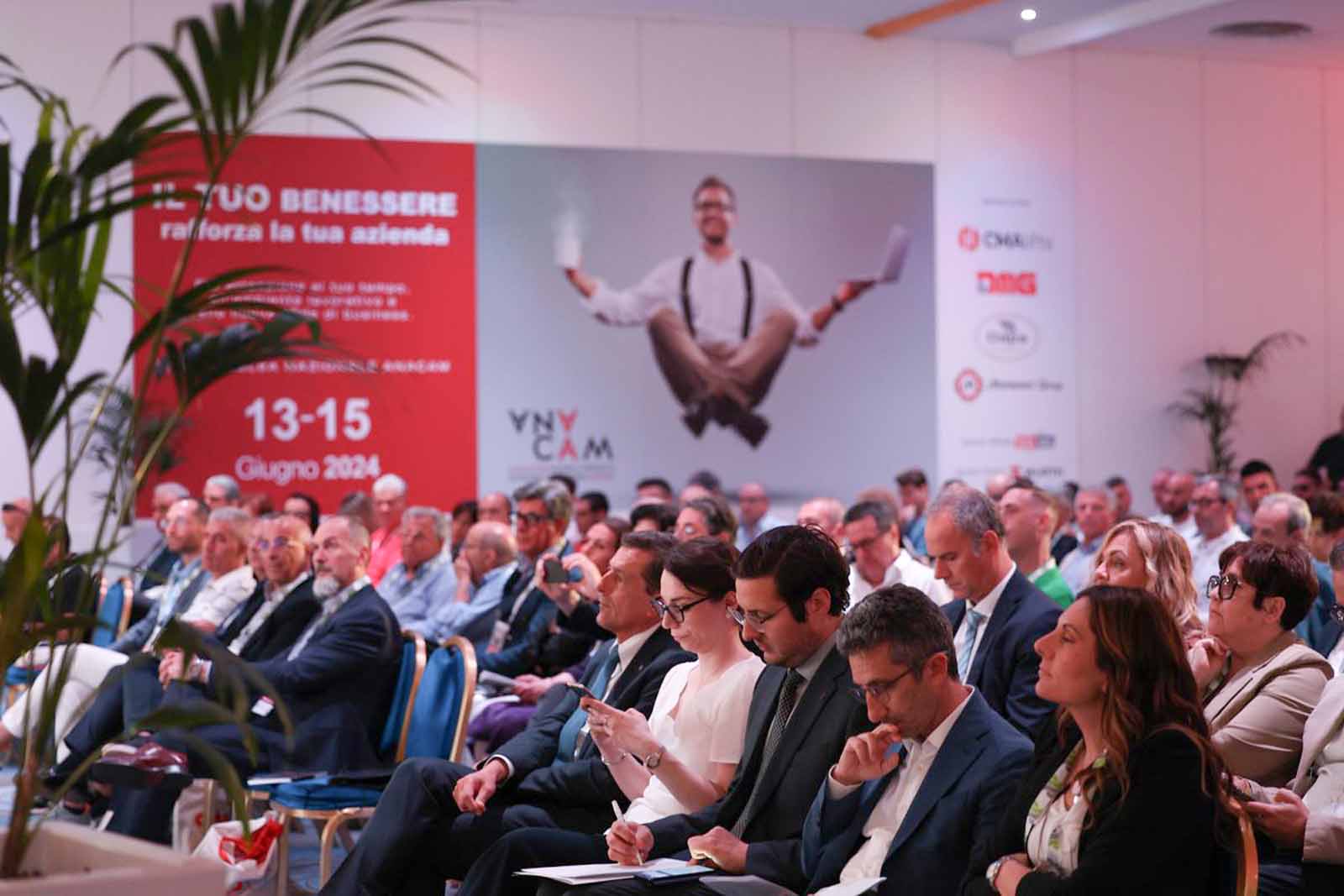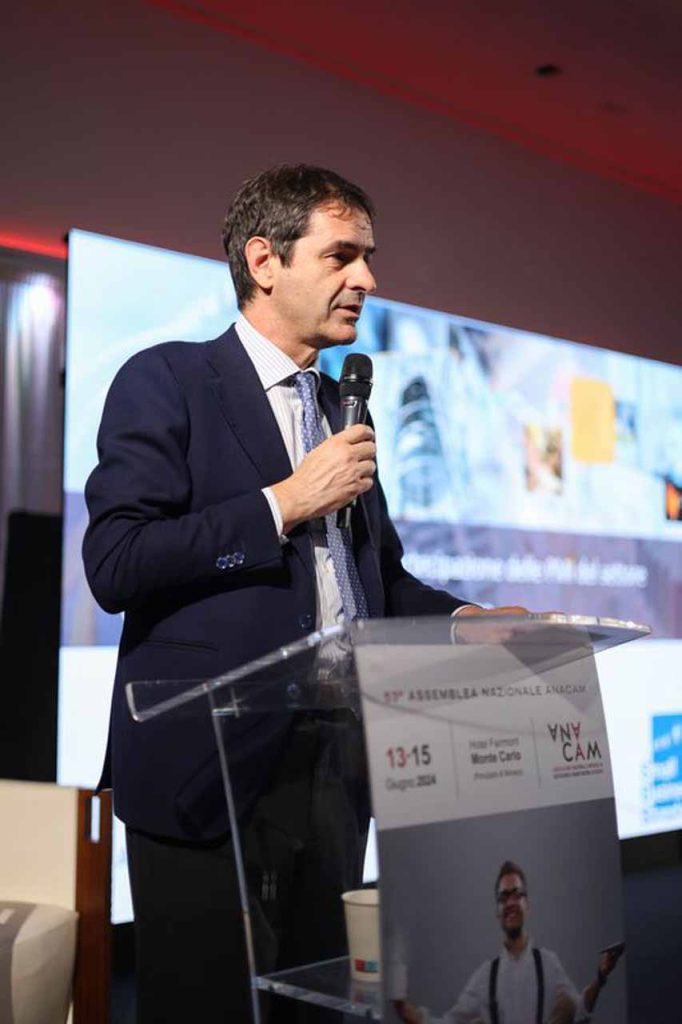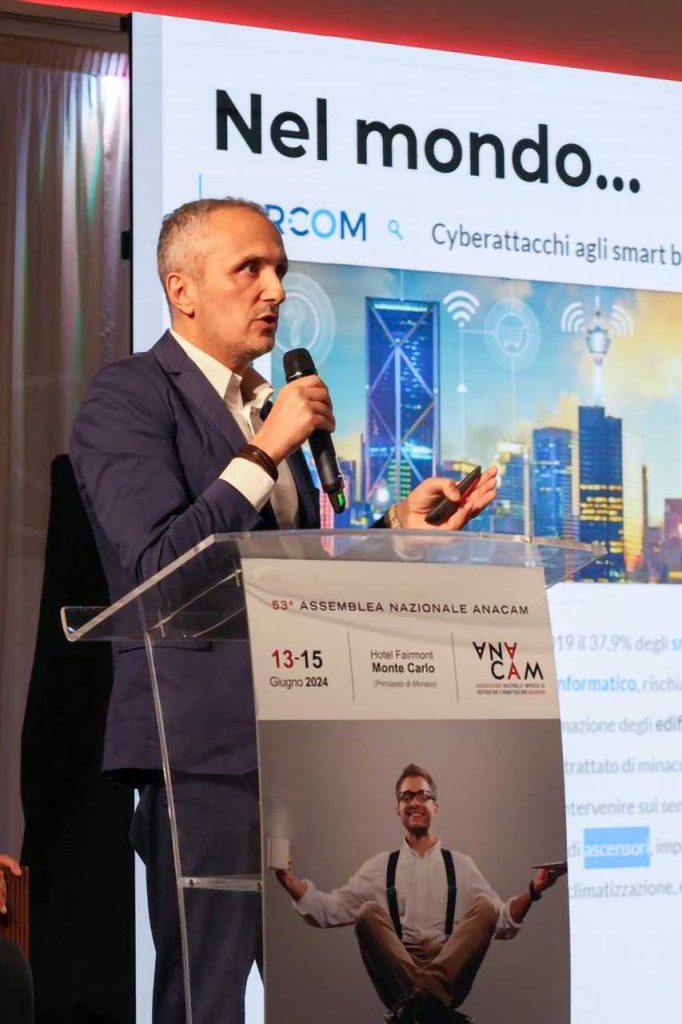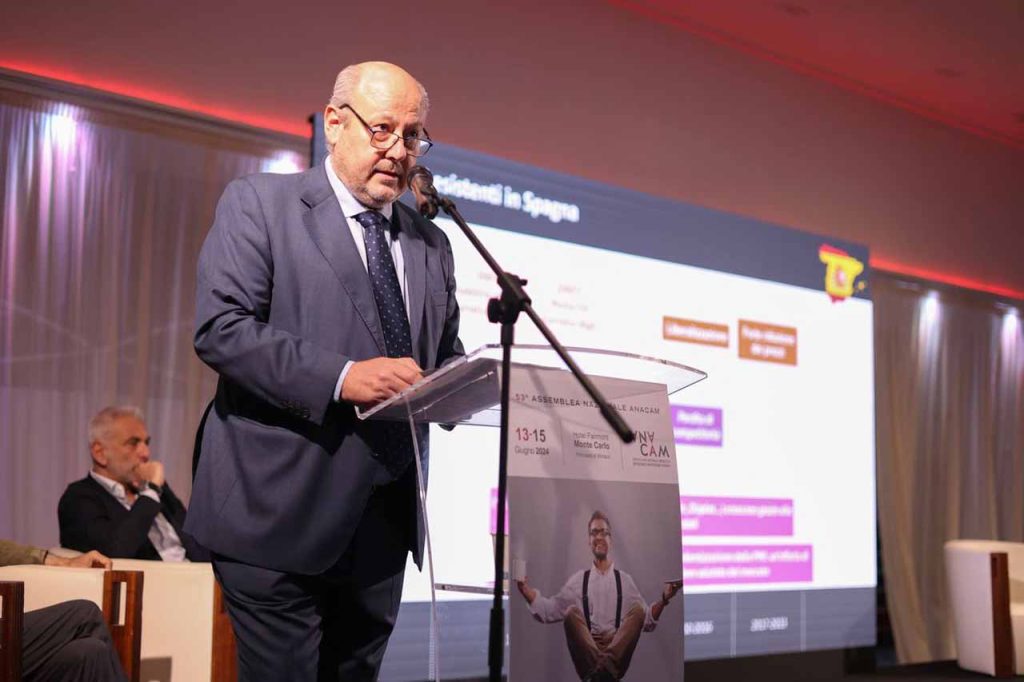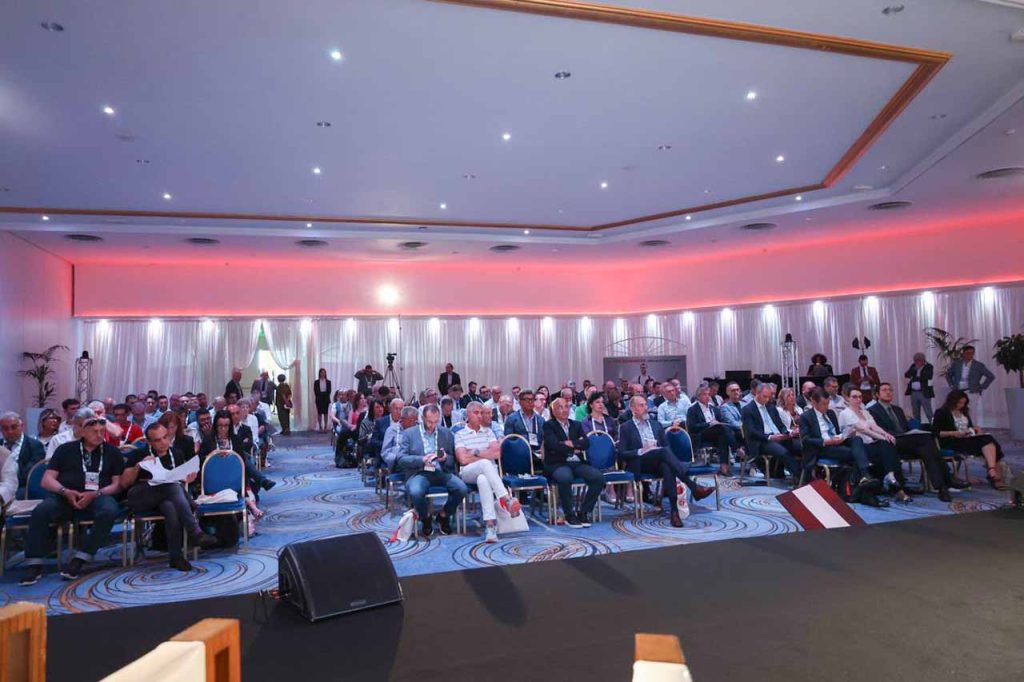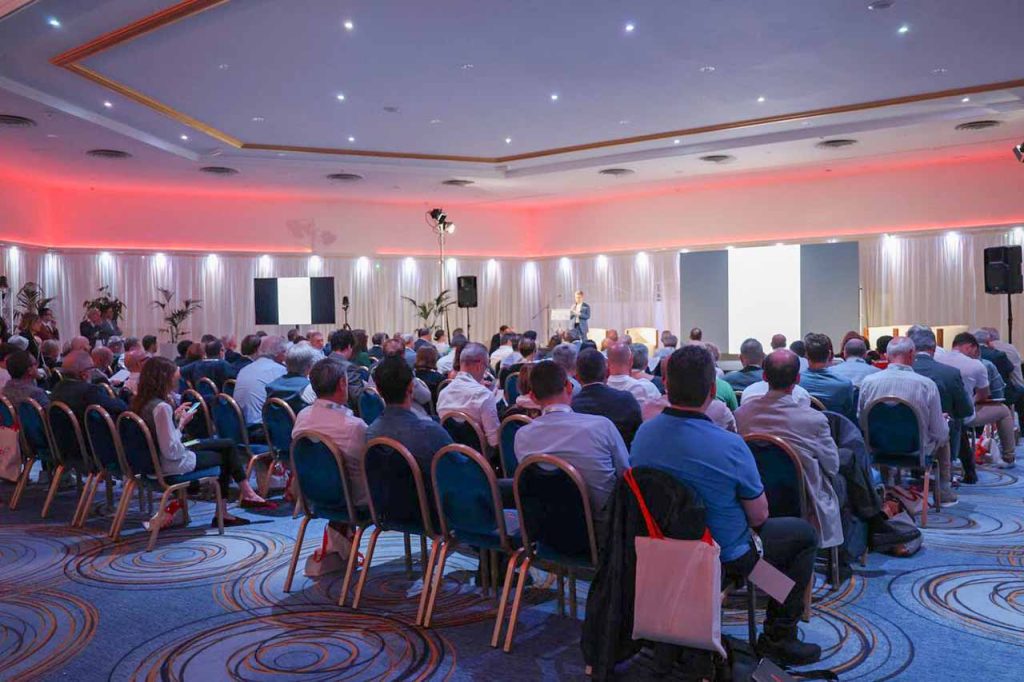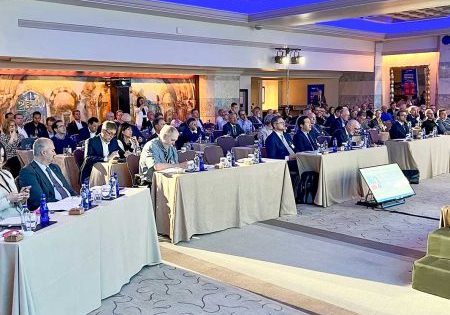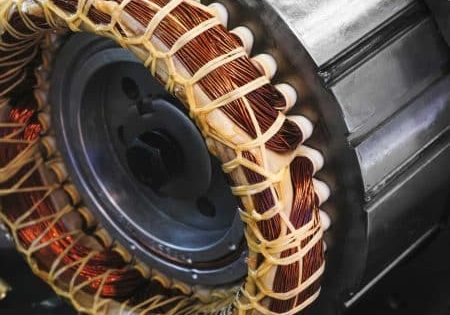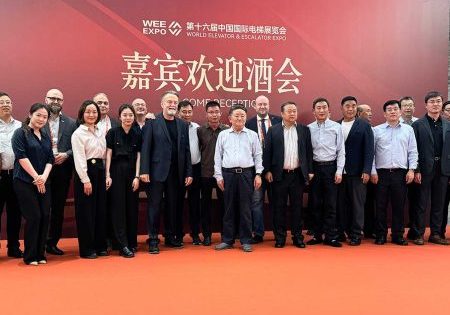Standardization, accessibility, training and cybersecurity are the old and new challenges ahead.
by Titti Lo Papa
The 53rd ANACAM (National Association of Lifts Manufacturing and Maintenance Companies) National Assembly, held on June 13-15 in Monte Carlo, in the Principality of Monaco, was an opportunity for discussion and updating, with an eye toward the international dimension. With extraordinary attendance and an agenda full of high-level speeches, the event highlighted new trends and challenges facing the sector, with a particular focus on standardization at the European level, accessibility, training and cybersecurity.
The European Session
The session dedicated to institutional speeches at the European level included Alberto Simeoni, account manager, Technical Boards of CEN-CENELEC, who discussed the internationalization of European technical standards, and Andrea Raffaelli who spoke about the role of the Small Business Standard (SBS), of which he is standardization policy officer and experts coordinator.
Mehdi Hocine, head of the Machinery and Equipment Unit of the European Commission’s DG GROW H2, the unit responsible for the Lifts Directive, emphasized in a video message the importance of updating the Lifts Directive in response to global changes in terms of digitalization, circular economy, sustainability and cybersecurity. He then announced the launch of a process aimed at the possible revision of the Directive itself with the selection of a consultancy firm to conduct a survey of all European stakeholders to assess whether it meets current needs with a focus on product safety throughout its life cycle.
The European Federation for Elevator Small and Medium-Sized Enterprises (EFESME), the European federation representing 15 associations from 14 different European countries and through which ANACAM plays a key role in Europe, also participated in this panel.
EFESME President Massimo Bezzi emphasized the importance of active SME involvement in standardization processes that otherwise risk failing to influence future standards. For this reason, EFESME drafted a manifesto in view of the European elections, identifying macro-areas on which to develop projects and initiatives in cooperation with SMEunited and SBS. Key points of the manifesto include the development of SME-friendly standards and the dissemination of information on EU-funded projects. Digitalization, sustainability and social responsibility, skills development and security are other areas on which EFESME intends to work to support SMEs. Bezzi said:
“In recent years, we have witnessed an increasing professionalism and presence in European and international technical working groups, but the proliferation of standards will require further efforts and additional resources to better protect and support the SMEs we represent.”
Elettra Bilibio, EFESME policy advisor, presented the results of a questionnaire to collect information on modernization and safety in the European lift industry through the Federation’s members. The largest contribution came from Italian, Spanish and French companies. The results of the questionnaire show that European SMEs tend to prefer the modernization of post-Directive 95/16/EC CE-marked lifts rather than their complete replacement. Pre-Directive lifts, on the other hand, require complex and costly modernization, which is why people often opt for replacement or decide not to take action.
In the case of pre-Machine Directive 2006/42/EC lifting platforms, a similar trend can be observed: Old, uncertified platforms are generally replaced rather than modernized. Conversely, in the case of post-Directive platforms, modernization is preferred to complete replacement.
The accidents recorded were not caused by a lack of safety on the platforms, but mainly by problems with the difference at floor level of the platform and the lack of remote assistance and control. Finally, when it comes to placing new lifts or platforms on the market, companies rely on notified bodies for risk analysis.
EFESME experts Ivan Ferrarini, Tiziano Caresani, Marco Cogliati and Paolo Tattoli then took stock of the European standards.
Accessibility and ANACAM MAGAZINE
During the Assembly, it was reiterated that accessibility is a fundamental right for all citizens, regardless of their physical, sensory and cognitive abilities. Director Luca Incoronato explained that the National Observatory on the Condition of Persons with Disabilities (Osservatorio Nazionale sulla Condizione delle Persone con Disabilità), established at the Ministry of Disabilities, has among its main objectives the harmonization and simplification of Italian disability legislation. This objective was formally stated in a document of the Observatory. ANACAM’s commitment, said Incoronato, is to continue to contribute to more up-to-date legislation on the removal of architectural barriers, which also takes into account the needs of those who design and install systems and equipment to overcome such barriers.
ANACAM, explained National Vice President Piero Mosanghini, was perhaps the only association to enter into an agreement with a bank that, despite various problems, has always allowed member companies to access and manage tax credits deriving from the Architectural Barrier Bonus. This incentive, introduced in Italy in 2022 by the Budget Law, allows a 75% tax deduction for expenses incurred for architectural barrier removal work. In the past, this deduction could be enjoyed either as a reduction from income or as a discount on the invoice (applied directly by the supplier of products or services) or assignment of the credit to a third party (including credit institutions and other financial intermediaries).
With the passage of time, various restrictions were introduced until the complete repeal of the invoice discount and assignment of credit — two methods of accessing the bonus that catered to the weakest and most fragile segments of the population. ANACAM took action to make the Italian government reconsider the decision, having an open letter published in the Corriere della Sera, the most widely circulated newspaper in Italy, and sending its own memorandum to the Senate’s Finance and Treasury Commission. Mosanghini then summarized the current situation, stressing once again that the 75% bonus should not be considered a building bonus but an important social instrument. It is no coincidence that the use of the invoice discount, particularly for the purchase of chairlifts and stairlifts, has significantly affected the most deprived areas of the country.
Coinciding with the event, ANACAM also launched a new issue of ANACAM MAGAZINE dedicated entirely to accessibility and reflecting the association’s ongoing commitment to open a debate with the Italian government to redefine the framework of concessions and make it stable over time in order to make existing buildings currently lacking lifts accessible, which in Italy, according to the latest available Istat data, is about 69%.
Education/Formation
Training was another central theme of the Assembly. ANACAM is actively working on a project to develop partnerships with technical and professional institutes and training organizations. The initiative, which was presented in Monte Carlo by project leaders Alessandra Recchia and Icaro Sborgia, aims to raise awareness among the younger generations of the importance of the lift technician profession, and to attract young talent that can contribute to the future of a sector that represents worldwide excellence.
The association is producing a kit including an educational program and a specific textbook for junior technicians by engineers Giuseppe Iotti and Tattoli. In addition, a video has been produced to illustrate the profession of lift operator in a modern and engaging way, as well as clips to be shown in schools that collect the testimonies of young technicians sharing their passion and personal experiences.
Collaboration with schools is certainly an important opportunity to address the lack of specialized personnel in the lift sector, but ANACAM is adopting all possible strategies, taking into account the specificities of each region in which Italy is divided and the needs of its member companies. With this in mind, ANACAM will implement targeted training for the tutors who are to accompany the young people on their way to the companies, and a theoretical training course for the young people that the companies manage to find on their own.
ANACAM is not only focusing its training activities on bringing young people closer to the world of lifts. The partnership with the Spanish company Docensas makes it possible to offer a series of interactive online courses, specifically designed to meet the continuous training needs of lift technicians, which are highly effective thanks to very realistic and detailed graphics. The first three courses launched in March 2024 on some of the most popular lifts with “proprietary” technologies on the Italian market have received excellent feedback. Pepe Compagni of Docensas presented the new courses that will be available in the coming months for technicians, administrative and commercial staff. In particular, a course on reading hydraulic and electrical diagrams, a course on preventive and corrective maintenance of doors and a course on preventive and corrective maintenance of hydraulic components are highlighted.
Cybersecurity
The increasing digitalization of business processes and lifts makes the protection of IT systems a top priority, and it is essential that professionals in the sector are adequately prepared. This is why ANACAM hosted a very interesting panel dedicated to cybersecurity. Gianluca Iarussi, Tattoli and Luca Manara of Unguess Security launched the new CyberLift Security project and presented possible activities dedicated to ANACAM member companies. This is the first project in Italy aimed at raising the awareness of computer system security for SMEs in the lift sector. Part of the project involves tests conducted by certified ethical hackers to identify and resolve possible vulnerabilities in connected lift systems. In the digital age, however, even small companies must protect their computer systems because they are just as vulnerable as large companies, if not more so.
Firstly, many small companies do not have resources dedicated to computer security. This makes them easy targets for hackers. Even a simple phishing attack can have devastating consequences, leading to loss of sensitive data, disruption of services and reputational damage that can be irreparable for a small business. Secondly, the widespread use of mobile devices such as smartphones and tablets to manage business activities increases the access points that need to be protected. Every connected device represents a potential gateway for hackers. Protecting corporate data, therefore, requires a strategy that includes not only corporate computers, but also all mobile devices used by employees.
Furthermore, it is essential to train employees about cyber threats and best practices to avoid risky behavior. Investing in cybersecurity may seem expensive for a small company, but the costs associated with a data breach can be much higher.
Conclusions
The 53rd ANACAM National Assembly once again demonstrated the association’s commitment to guiding member companies toward the challenges of the future. ANACAM National President Andrea Codebò said:
“The interventions of the speakers during the Monte Carlo Assembly were of the highest level, bringing invaluable value to the entire event. The topics addressed and the solutions proposed provided new insights and ideas for the future of the lift industry. The projects that ANACAM is pursuing, geared toward innovation and continuous training, demonstrate our commitment to providing increasingly effective support to our member companies.”
ANACAM Service President Michele Mazzarda said:
“I am extremely proud of the success of the Monte Carlo event. The active participation and enthusiasm shown by all present was extraordinary. The event represented an important opportunity for discussion and growth for all professionals in the sector, confirming once again the importance of moments like these for the progress of our industry.”
ANACAM thanks all participants for their contribution and makes an appointment for next year, hoping to repeat and exceed the success of this edition.
Get more of Elevator World. Sign up for our free e-newsletter.
